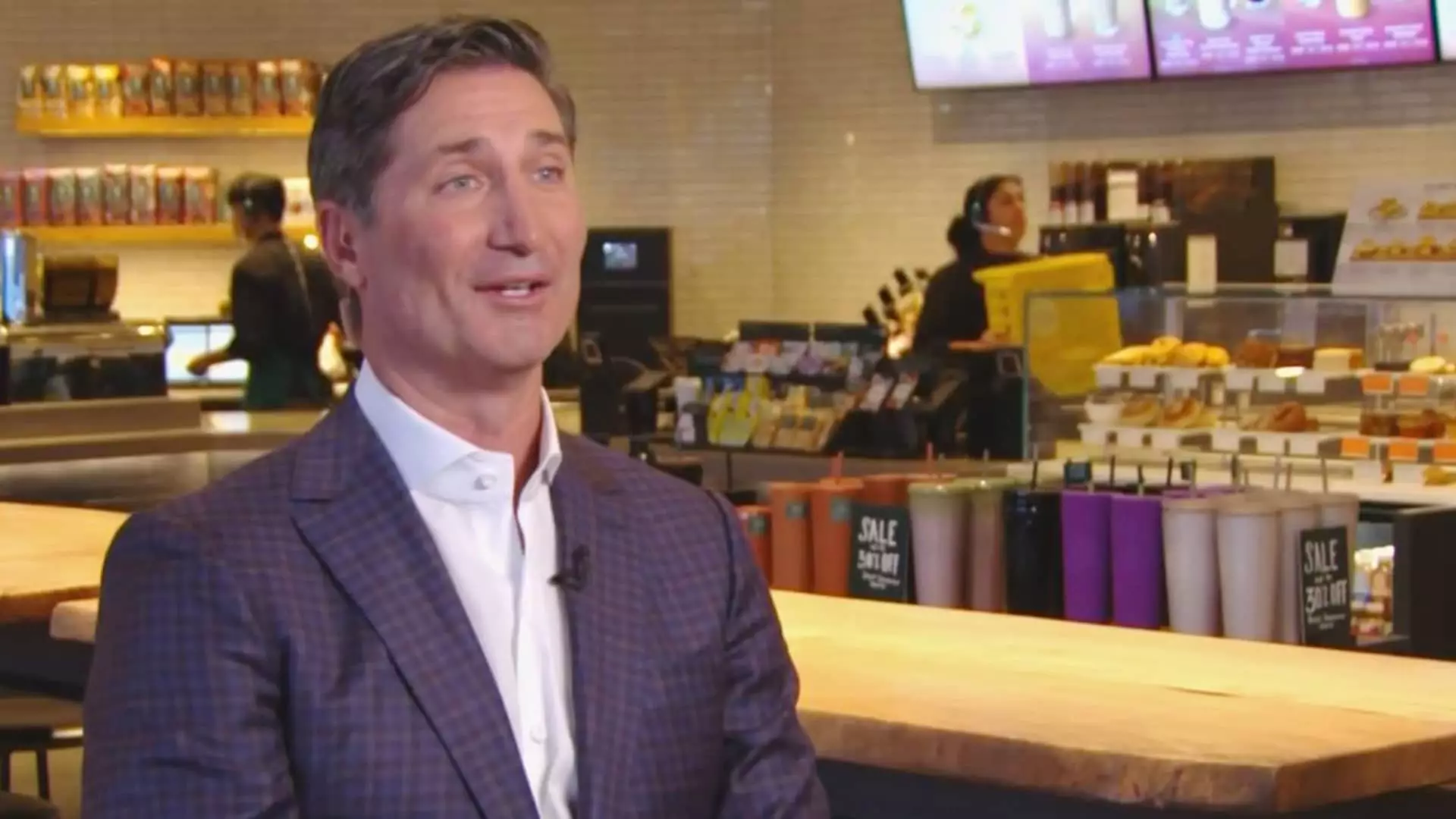Starbucks, a globally recognized leader in the coffee industry, has recently been grappling with a downturn in their sales. For three consecutive quarters, the company has reported falling revenue, raising concerns among investors and stakeholders alike. The company’s CEO, Brian Niccol, took center stage during a recent earnings call, unveiling a strategy aimed not just at reviving sales but also at reshaping the entire customer experience. Although the improvements may seem modest on the surface, their implications could be significant for the future of the brand.
The Challenge of Mobile Orders
One of the primary challenges facing Starbucks is the overwhelming volume of mobile orders, which account for over 30% of transactions in the U.S. Customers often encounter long wait times due to a crowded in-store counter filled with mobile order pickups. Recognizing this issue, Niccol emphasized the urgent need to enhance the app’s timing accuracy, ensuring that customers are informed precisely when their drinks will be ready. By refining this process, Starbucks hopes not only to alleviate customer frustration but also to streamline operations for baristas.
Moreover, Niccol proposed implementing strict customization limitations within the mobile ordering app. The wide array of options can lead to confusion and inconsistency in drink preparation. By establishing clearer guidelines for customization, the company aims to foster a more efficient workflow while maintaining the quality Starbucks is known for. This focus on standardized execution should yield faster service, enhancing the overall customer experience.
Revamping the Menu
In line with the goal of improving efficiency, Niccol announced an impending overhaul of the Starbucks menu. The new philosophy revolves around offering “fewer, better” options. This focus on simplicity is designed to enhance speed and consistency in drink preparation. Niccol pointed out that many menu items are rarely ordered, and the time baristas spend crafting these less-popular drinks can significantly slow down service. By pruning the menu, Starbucks will empower its staff to master the remaining selections, ultimately elevating the quality of each drink served.
While some customers may find the reduction in offerings disappointing, the expectation is that a more coherent menu will translate into quicker service and greater satisfaction in the long run. In this era of instant gratification, prioritizing efficiency is essential for retaining customers.
Another exciting element of Niccol’s strategy involves restoring Starbucks locations to their former glory as community-rich “third places.” Historically, Starbucks cafes have been regarded as welcoming havens for customers to work, socialize, and relax. However, recent store designs have leaned heavily toward takeaway and mobile pickup convenience, marking a departure from the traditional café experience.
Niccol’s vision includes reintroducing personal touches such as ceramic mugs for customers who choose to stay and enjoy their beverages on-site. The return of traditional condiment bars will also restore elements of convenience that have been absent since the pandemic’s onset. By focusing on customer interaction and comfort, Starbucks hopes to reinstate its relevance as a community gathering spot.
Amid these changes, Starbucks is also addressing crucial staff welfare and operational efficiency. Niccol highlighted the importance of maintaining adequate staffing levels throughout the day, particularly during peak hours. Adequate staffing is not just about ensuring prompt service but also plays a pivotal role in reducing employee burnout and turnover rates.
Additionally, the company is increasing barista hours to enhance scheduling consistency, thereby improving job satisfaction and retention. By empowering employees and ensuring they are well-supported, the overall service quality is likely to improve, benefiting both staff and customers alike.
Strategic Marketing Revitalization
Aligned with these operational changes, Niccol aims to rethink Starbucks’ marketing tactics. The priority will shift towards appealing to a broader audience while expertly showcasing the brand’s quality coffee. This marks a departure from the previous emphasis on discounts, which Niccol described as “ineffective” and burdensome for baristas.
In a nod to the growing concern over coffee pricing, Starbucks has made the strategic decision to eliminate additional charges for milk substitutes, allowing customers to save on their orders. Importantly, the company does not plan any price hikes in North America over the next fiscal year, aiming to rebuild customer trust and improve perceptions regarding pricing.
Starbucks’ strategic overhaul under Brian Niccol’s leadership encompasses much more than mere sales recovery; it seeks to redefine the very essence of the Starbucks experience. By addressing operational inefficiencies, reimagining the customer environment, and revitalizing marketing efforts, the company aims not only to stem the tide of declining sales but also to solidify its place as a beloved community space. In a market as competitive as coffee retail, these thoughtful adjustments may well hold the key to Starbucks’ resurgence.

